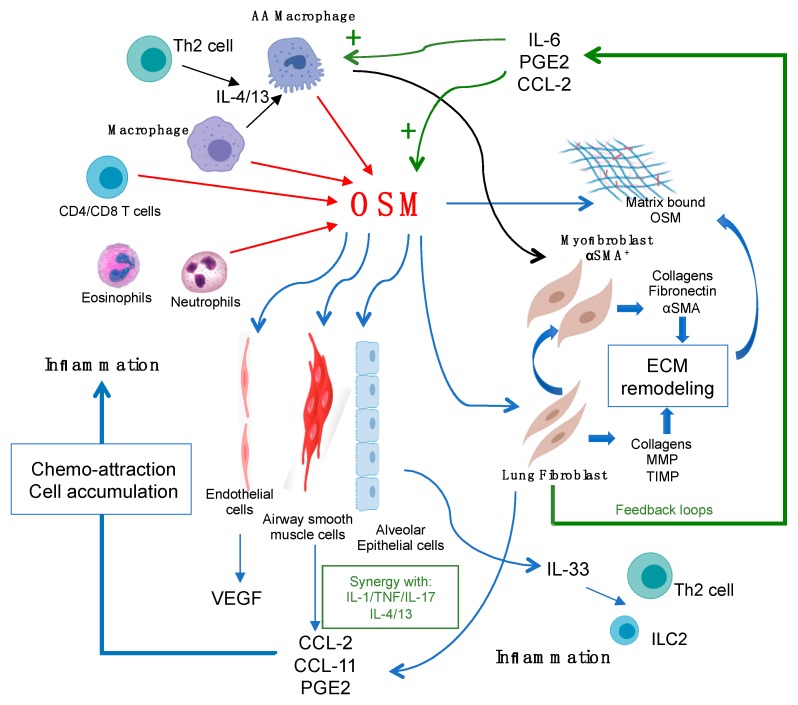Figure 1.
Oncostatin M (OSM) regulation of lung connective tissue cells, the extracellular matrix (ECM), and inflammation. OSM can be produced by a number of lung cell types (red arrows), such as macrophages, neutrophils, and T cells. OSM can act directly on target connective tissue cells of the lungs, including lung fibroblasts, smooth muscle cells, and endothelial cells (thin blue arrows) to produce the chemokines CCL2, CCL11, PGE2, and VEGF, as shown, which facilitates further inflammatory cell accumulation. OSM also stimulates epithelial cell overexpression of IL-33, which can stimulate Th2 cells and innate lymphoid (ILC)-2 cells once released. OSM also stimulates the accumulation of alternatively activated (AA) macrophages, which are thought to drive αSMA+ myofibroblast differentiation. Both lung fibroblasts and the myofibroblast production of matrix proteins results in increased ECM deposition. OSM ligand can also bind to the ECM, creating a bioactive reservoir of OSM. Production of IL-6, PGE2, and CCL2 by OSM-targeted cells provides feedback loops (green arrows) to further induce OSM production, macrophage activation, and hyperpolarization of AA macrophages (green plus symbols).

